Meet my dog Sunny, formerly known as John
In July 2023, I met John at an animal shelter. Many misinterpreted John, but he will soon take the name of Sunny. Inside his kennel, he would bark and jump off the brick walls of his kennel, unfortunately resulting in him hurting his paws. While others perceived him as untamed and unruly, I saw him through a different lens—a dog consumed by overwhelming fear, and he just wanted to be near someone.
When I arrived at the shelter, a staff member asked me to inspect his paw pads because John was experiencing a limp. After hearing about John, I went to meet him in his spacious kennel at the back of the run.
John’s Kennel Syndrome
John, as usual, was barking and jumping off the brick walls. I placed a treat lowered through the kennel gate to encourage him to keep all four paws on the ground. John quickly learned, and when I let him out, he was like a magnet to my side, not pulling on the leash at all.
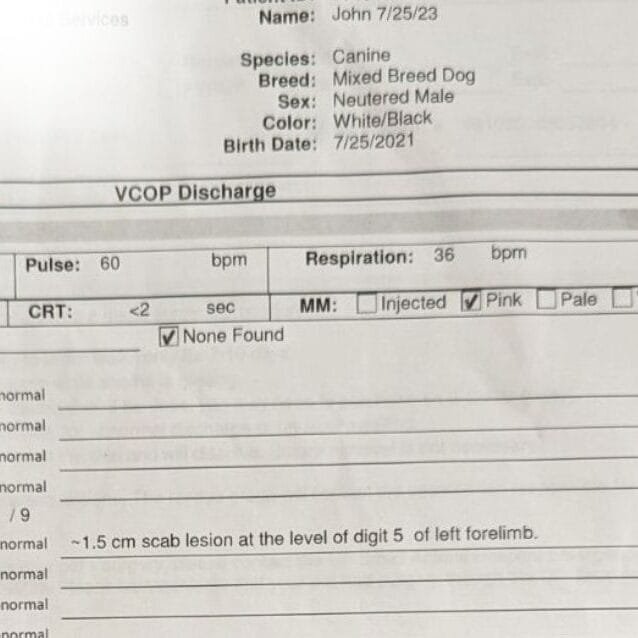
I led him to an exam room and discovered that he had injured both of his paws. The repeated bouncing off the walls of the brick kennel had led to a small lesion on his left paw. Without delay, the shelter arranged for him to see a vet and moved him to a larger fenced area.
4 F’s of Fear
Most people believe that a hyperactive dog needs more exercise, but often, these dogs get overstimulated and need rest. This fear response is called “fidgeting.”
While the stages of “fight” and “flight” are well known in relation to survival, we often fail to acknowledge the importance of the stages of “fidget” and “freeze.”
He clearly displayed freeze-like behavior outdoors, but many would say he was well-behaved on a leash. I immediately understood the situation, but the cramped space in the shelter limited John’s options.
John’s Health was Deteriorating
Despite the shelter’s efforts to provide a fulfilling life, John’s condition showed no signs of improvement. They changed his surroundings, introduced him to other dogs, and provided enrichment. However, his irregular eating habits and never-ending pacing and barking caused concern for his health. Because of his deteriorating health, his time at the shelter was limited.
Acknowledging the Shelter’s Efforts
The staff at the shelter worked tirelessly to enrich the lives of the animals under their care, and their dedication truly deserves recognition.
Despite their efforts to provide a good life for animals and save as many as possible, these employees often face scrutiny from the public.
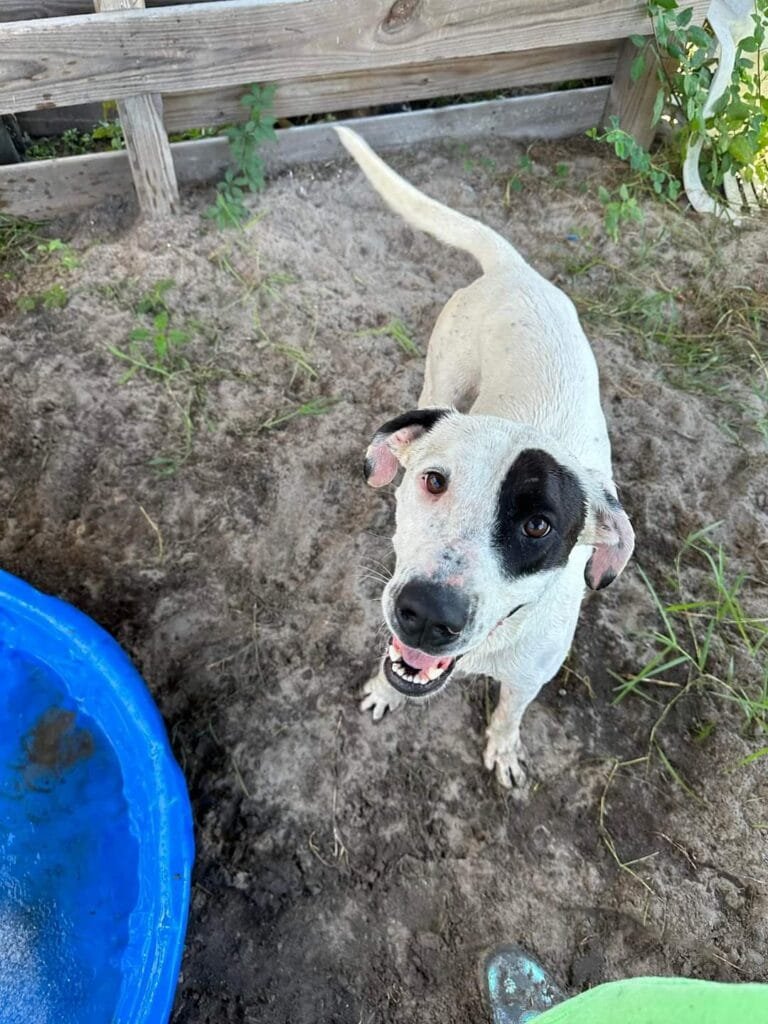
In my eyes, these shelter employees are genuine heroes, as they work diligently behind the scenes and receive truly little recognition for their important work.
***If you have concerns regarding your local animal control shelter, I encourage you to consider speaking with your county commissioners about budgeting and local policies. ***
Sunny’s Journey Home
September 2023 arrived, and John’s condition was deteriorating, putting him at risk of being euthanized. My house was under renovation during that time.
Although it wasn’t convenient, I picked him up as soon as possible. On October 7th, 2023, I brought home Sunny, formerly known as John. I gave John the new name Sunny to symbolize a life of happiness and sunny days ahead.
Sunny’s Routine
At first, I tried to focus on training Sunny. After the first couple of days, I realized it was better to go with his energy and give him a productive outlet. So, I would wake up, stand at my door, and throw his toy outside.
He would run, get it, and bring it back. Once I had thrown his toy three to five times, his energy decreased, giving us the chance to focus on productive behaviors inside. Our daily routine involved playing, training, and then taking time to relax.
Alternating Between High Energy and Relaxation
Sunny was anxious, constantly jumping on his hind legs. I made it a routine to play and train with him every morning for one to two hours. Then, he would rest in the kennel for one to two hours. We repeated this routine multiple times throughout the day, with Sunny having both high-energy moments and moments of calm.
Controlled Play Sessions
While Sunny was initially dog-friendly in the shelter, I soon noticed that he would play too rough with my dog, Applejack. Normally, I would let the dogs figure it out themselves, but I had to intervene multiple times.
Applejack would cry out in pain, but Sunny wouldn’t let go, making it difficult for Applejack to escape. Recognizing this, I gradually acclimated them to shorter play sessions and periods of rest. I used a leash to control Sunny within a six to ten-foot range and rewarded them for stopping playing to relax together.
Shared and Individual Moments
During the first week or two, I kept Sunny and Applejack separated, only allowing them to be together for short periods of five to ten minutes.
Training Foundational Skills
I kept Sunny separate in order to prevent any issues and give some dedicated time for training basic commands, such as recall and sit. To address the rough play problem, I first taught Sunny to relax with me and then with Applejack.
Sunny and My Family
For weeks, Sunny was always on a harness and leash. Sunny’s interaction with my family was limited because he would get overstimulated, start mouthing and jumping.
Sunny’s Initial Few Weeks
My focus was letting Sunny calm down and realize the world is safe. He didn’t need to run, jump to signal nervousness, or be hypervigilant. Sunny was safe, but he also needed boundaries. Nowadays, most people want to live sedentary lives with their dogs, so I was teaching Sunny to lean into his energy, but to learn how to calm down.
Prevention with a Harness and Leash
The purpose of keeping Sunny on a leash was to guide him, not to restrain him from making mistakes.
Examples:
- If Sunny ever took something he wasn’t supposed to, like my child’s stuffed animal or a shoe, I would step on the leash. I made use of that chance to teach him to drop it or trade.
- If Sunny attempted to jump, I would step on the leash to prevent him from jumping and guide him towards a better behavior, such as sitting.
My focus was on training the necessities to ensure his safety and success in a new home: recall, spinning and sitting to control his energy, potty training, lying down, crate training, and using his nose to bump me to signal anxiety instead of jumping.
Life Given to Sunny, not Chosen
Honestly, sometimes, Sunny drove me nuts, and he still does sometimes. He barked, wouldn’t stop moving, and jumped, scratching me all over. But every time he acted up, I felt sorry that he got stuck with this life he never asked for. He spent most of his life in the shelter.
I didn’t know it at the time, but he was the dog I needed when I promised to guide him towards a better life.
Balancing Professional and Personal Perspectives
Amidst college, remodeling, and running a business, a rescue person urged me to get him adopted quickly, fearing I’d get attached. The truth is every misunderstood dog I meet tugs at my heartstrings because I sympathize with the challenges they face. They were dealt with a life they didn’t choose and were struggling to communicate with a world that didn’t understand them.
Sunny at Adoption Events
Weeks turned into months. At adoption events, Sunny displayed the” fidget” response of fear.
Adoption events are loud and there is a lot of movement. This was replicating his experiences he had at the shelter when he was kennel crazy. So, when you see a dog displaying hyper behavior at an adoption event, please understand that is not what they are always like in a home environment.
Welcome Home Sunny Boy
Throughout those four months, I offered various suggestions that I believed could help Sunny. Each time, I received responses like:
- “These are normal behaviors for a dog in a rescue”
- “You don’t need to worry about his behavior. His new owners will take care of them.”
- “Maybe he needs more exercise.”
- “Instead of a canine behavior consultant mindset, give his profile a fun and light vibe.”
When I shared my professional advice, I was told that shelter and rescue dogs are different from the dogs I usually work with. I expressed concerns about Sunny’s hyperactivity, rough play, and destructive behaviors, even sending videos to illustrate my points.
Despite my efforts, I often felt dismissed, as if my experience didn’t apply to rescue dogs. Eventually, I stopped sharing my opinions because they weren’t valued within the context of their longstanding rescue practices. This experience was disheartening but reinforced my belief in understanding each dog’s unique needs, regardless of their background.
Learn about the top reasons for dog shelter returns by clicking here.
After several months of Sunny being a part of my household, we established a peaceful routine that suited everyone. This led me to make the choice to adopt him. Now, Applejack and Sunny are best friends.
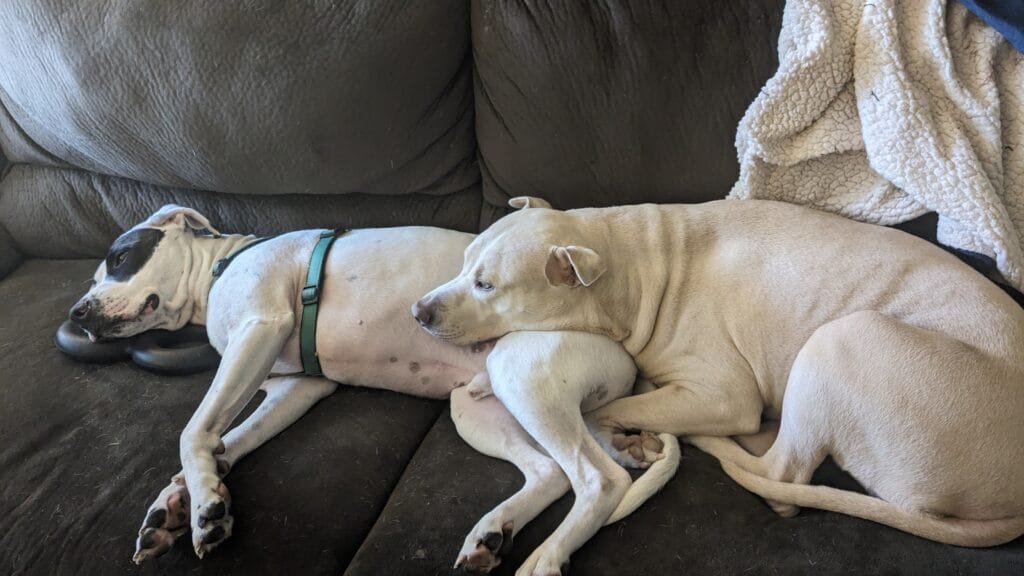
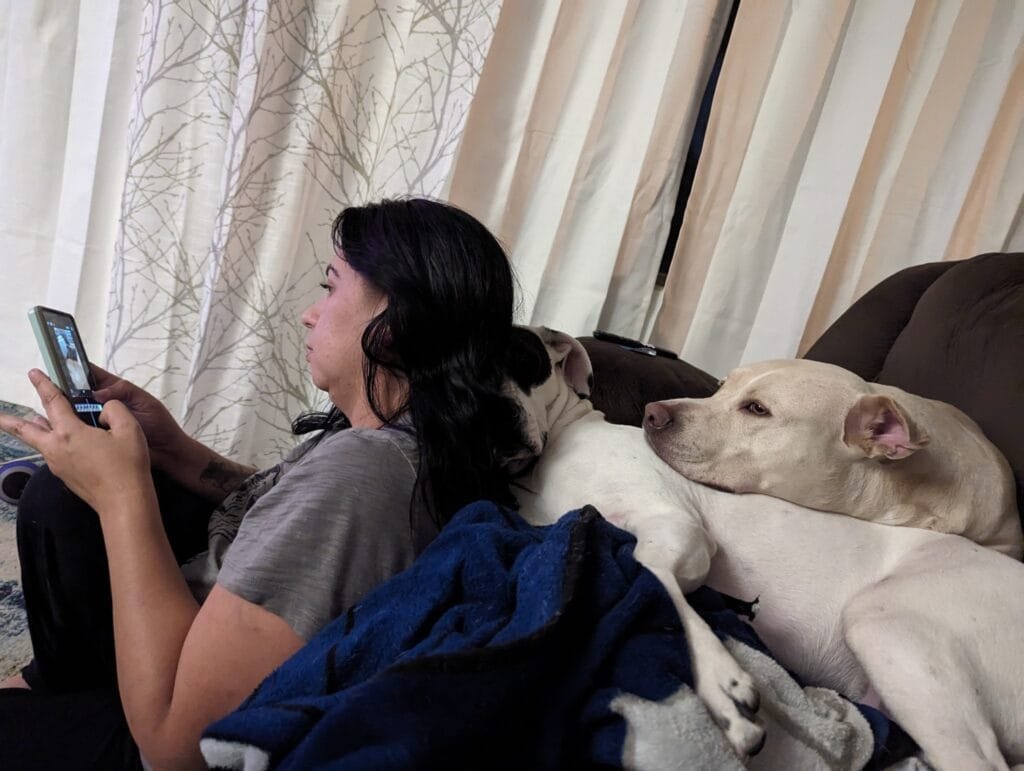
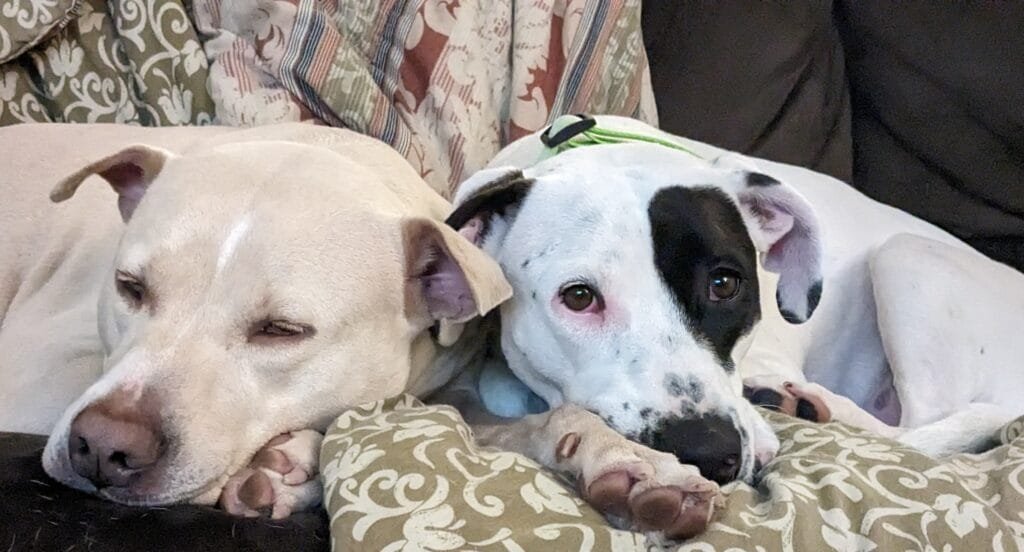
Today, when Sunny becomes overstimulated, he comes to me for comfort. He is a great dog who understands when to show his wild side and when to settle down..
Reflecting on the Journey
To be honest and transparent, I stopped trusting some of the rescue world because, while our goals are the same, our methods differ.
I wanted dogs to stay in their homes, and they wanted the dogs out of the shelter.
Although both are crucial, I doubt our worlds can cooperate because of the human ego. I kept on hearing, “Well, I have done this for years and it is normal.”
The misconceptions about what is considered “normal” in some rescues prevent people from adopting, fostering, or trusting them. As canine behavior consultants, we should discover routines that accommodate both the dog owners’ schedule and fulfill the dogs’ needs. I’ve encountered many individuals who feel guilty and inadequate for not meeting their dog’s needs, resulting in their reluctance to voice their concerns.
We are all doing the best we can with the knowledge and resources we have available to us.
Humans and Dogs Deserve Happiness
Some of my clients end up being prisoners in their home, justifying isolating themselves and scheduling their lives around their dogs because they want to be good dog owners. While I admire them for doing so, I believe people should live fulfilling lives and there is a way to keep dogs like Sunny in a home without living my life around his schedule. I meet too many people who become broken down from their relationship with their dogs, and I never wanted to see it for Sunny or his new owners.
Sunny is the Dog I Needed
My experience with Sunny taught me the importance of leaning into the chaos and working with him, not against him. Today, he is my demo dog and one of my best adventure pups. This journey has reinforced my commitment to helping dogs and their owners live happier, more harmonious lives together.
Summary of Key Takeaways
1. Understand Fear Responses: Recognize the different fear responses in dogs: fight, flight, fidget, and fawn.
2. Rest vs. Exercise: Overstimulated dogs often need rest, not more exercise.
3. Gradual Integration: Introduce new dogs to your home and other pets gradually, using short, controlled interactions.
4. Training Essentials: Focus on foundational training skills like recall, sit, and crate training to ensure safety and calmness.
5. Compassionate Handling: Use guidance instead of force; step on the leash to guide rather than grab.
6. Advocate for Shelters: Recognize and support the efforts of shelter staff. If you have concerns, engage with local authorities about policies and budgeting.
Does Your Dog Sound Like Sunny?
If your dog sounds like Sunny, I would be happy to help you both adjust and live a happier life together. Click here to learn more about the services I offer.

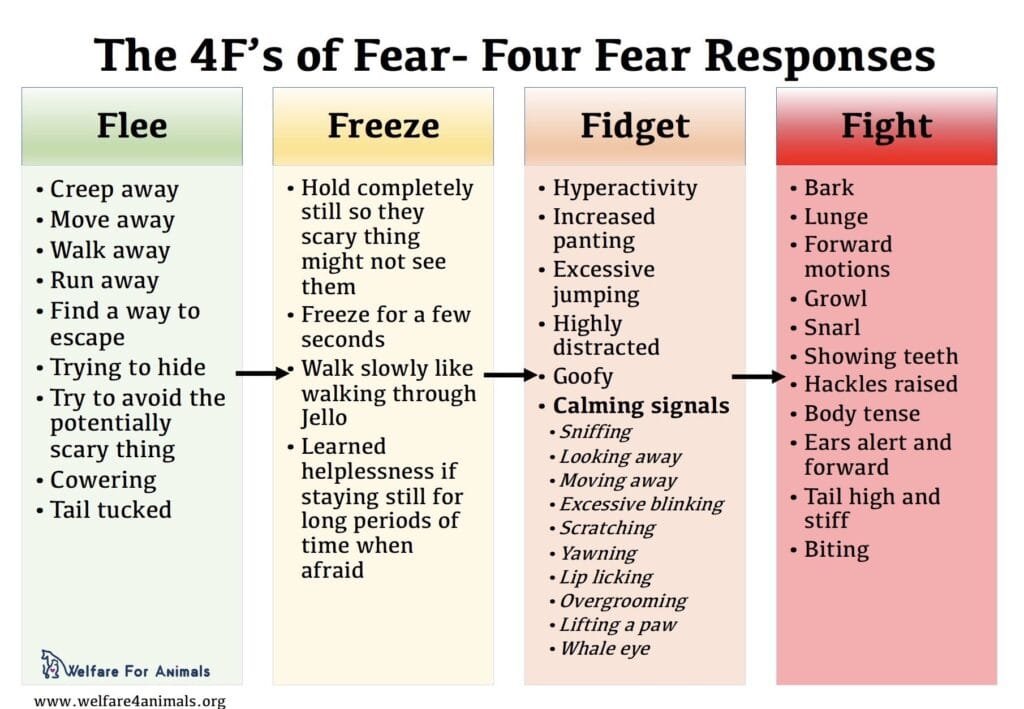
One response to “Sunny’s Journey”
Yesssss!!! I not only love the story of you and Sunny, but I can relate. I have tried many times over to work with rescues and seemed to be dismissed with ideas. The ego is the biggest problem with humanity. And the ones who suffer are the animals. Thank you for sharing this beautiful story. Many well wishes for Sunny, you, Applejack and the family.